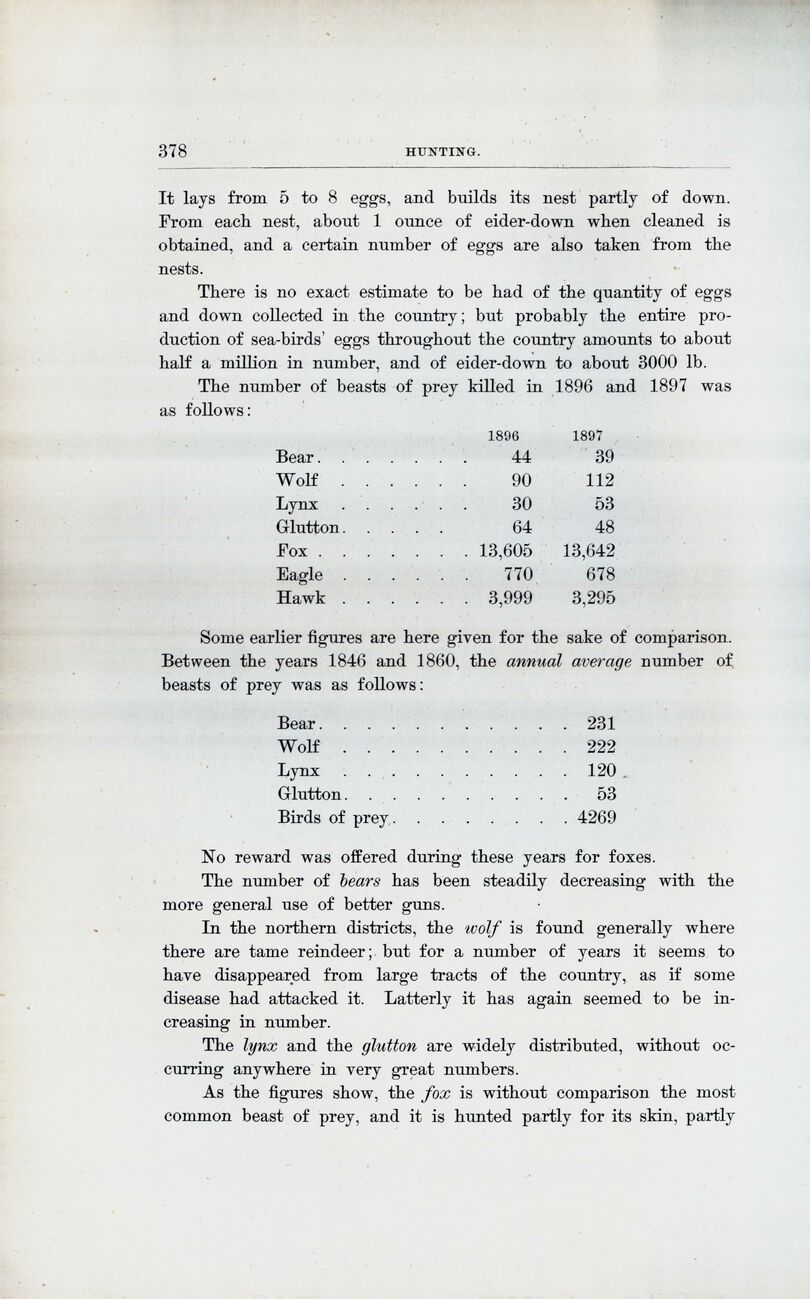
Full resolution (JPEG) - On this page / på denna sida - Hunting

<< prev. page << föreg. sida << >> nästa sida >> next page >>
Below is the raw OCR text
from the above scanned image.
Do you see an error? Proofread the page now!
Här nedan syns maskintolkade texten från faksimilbilden ovan.
Ser du något fel? Korrekturläs sidan nu!
This page has been proofread at least once.
(diff)
(history)
Denna sida har korrekturlästs minst en gång.
(skillnad)
(historik)
It lays from 5 to 8 eggs, and builds its nest partly of down.
From each nest, about 1 ounce of eider-down when cleaned is
obtained, and a certain number of eggs are also taken from the
nests.
There is no exact estimate to be had of the quantity of eggs
and down collected in the country; but probably the entire
production of sea-birds’ eggs throughout the country amounts to about
half a million in number, and of eider-down to about 3000 lb.
The number of beasts of prey killed in 1896 and 1897 was
as follows:
| 1896 | 1897 | |
| Bear. . . | 44 | 39 |
| Wolf | 90 | 112 |
| Lynx . . . ... | 30 | 53 |
| Glutton. . . . . | 64 | 48 |
| Fox .... . . . | 13,605 | 13,642 |
| Eagle . . . . . . | 770 | 678 |
| Hawk . . . | 3,999 | 3,295 |
| Bear........... | 231 |
| Wolf.......... | 222 |
| Lynx.......... | 120 |
| Glutton.......... | 53 |
| Birds of prey................ | 4269 |
<< prev. page << föreg. sida << >> nästa sida >> next page >>